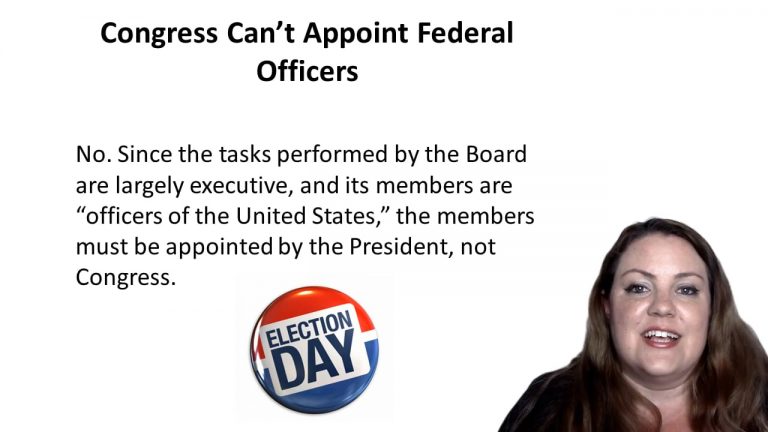SmartBrief
Confirm favorite deletion?
Constitutional Law Keyed to Chemerinsky
NLRB v. Noel Canning
Citation:
573 U.S. 513 (2014)Facts
The President must obtain “the Advice and Consent of the Senate” before appointing an “Officer of the United States.” The Recess Appointments Clause, however, gives an exception to the Clause and allows the President to fill up all vacancies that may happen during the recess of the Senate. The National Labor Relations Board (NLRB) found that a Pepsi-Cola distributor, Noel Canning, had unlawfully refused to execute a collective-bargaining agreement with a labor union. Following the Board’s order on the distributor to execute the agreement, the distributor asked the Court of Appeals for the District of Columbia to set aside the order. It claimed that some Board members had been invalidly appointed by the President, who appointed them by invoking the Recess Appointments Clause.
Only StudyBuddy Pro offers the complete Case Brief Anatomy*
Access the most important case brief elements for optimal case understanding.
*Case Brief Anatomy includes: Brief Prologue, Complete Case Brief, Brief Epilogue
- The Brief Prologue provides necessary case brief introductory information and includes:
Topic:
Identifies the topic of law and where this case fits within your course outline.Parties:
Identifies the cast of characters involved in the case.Procedural Posture & History:
Shares the case history with how lower courts have ruled on the matter.Case Key Terms, Acts, Doctrines, etc.:
A case specific Legal Term Dictionary.Case Doctrines, Acts, Statutes, Amendments and Treatises:
Identifies and Defines Legal Authority used in this case.
- The Case Brief is the complete case summarized and authored in the traditional Law School I.R.A.C. format. The Pro case brief includes:
Brief Facts:
A Synopsis of the Facts of the case.Rule of Law:
Identifies the Legal Principle the Court used in deciding the case.Facts:
What are the factual circumstances that gave rise to the civil or criminal case? What is the relationship of the Parties that are involved in the case.Issue(s):
Lists the Questions of Law that are raised by the Facts of the case.Holding:
Shares the Court's answer to the legal questions raised in the issue.Concurring / Dissenting Opinions:
Includes valuable concurring or dissenting opinions and their key points.Reasoning and Analysis:
Identifies the chain of argument(s) which led the judges to rule as they did.
- The Brief Prologue closes the case brief with important forward-looking discussion and includes:
Policy:
Identifies the Policy if any that has been established by the case.Court Direction:
Shares where the Court went from here for this case.
Topic Resources
Topic Refresher Course

 8m 0s
8m 0s